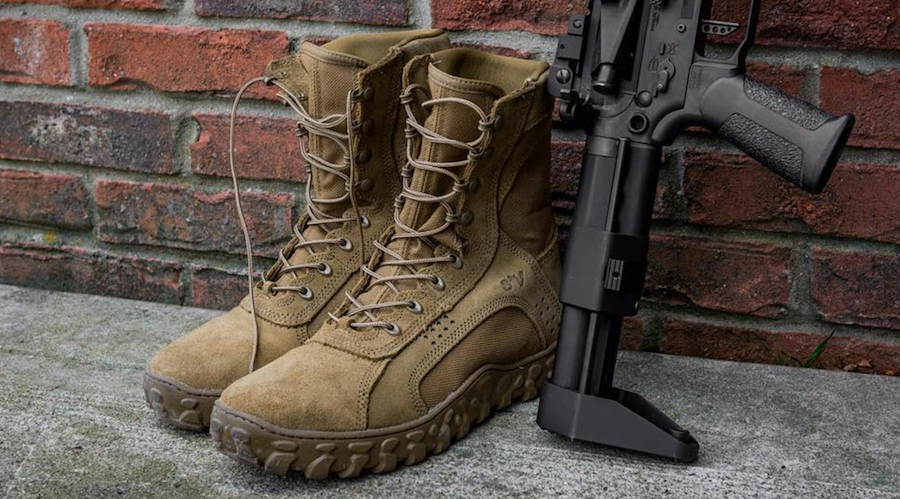Rocky Brands, benefitting from cost-cutting initiatives launched last year, saw a strong turnaround in profits in its first quarter. More promising, the sales declines at its wholesale accounts appear to be stabilizing.
“Wholesale sales were down just slightly, as trends in this channel continue to show signs of stabilizing,” said Mike Brooks, chairman and CEO, on a conference call with analysts. He added, “While the retail environment remains challenging, many of our accounts started the year with improved inventory positions, which have created better at-once opportunities for certain of our product lines.”
Net income for the quarter was $1.5 million, or 20 cents per share, compared to a net loss of $200,000, or 3 cents, in the same period a year ago.
Net sales for the first quarter increased 9.6 percent to $63.1 million. By segment, wholesale sales slipped 2.5 percent to $39.2 million. Retail sales increased 2.9 percent to $11.9 million, and military sales jumped 107 percent to $12 million.
Among its segments in its wholesale segment, work footwear sales in total were relatively flat year over year. Comparisons were skewed by contributions from a low-margin private label program, which was discontinued in fall 2016.
The company’s core work label, Georgia Boot, saw a low-double-digit increase in sales, with the help of a strong response to spring offerings. The brand also saw a 100 basis point increase in product margin during the first quarter.
In western, Durango posted a mid-single-digit sales increase for the quarter, but those gains were offset by a decline in Rocky Western footwear. Brooks said the Rocky Western decline was likely primarily due to the disruption caused by the 2016 restructuring of its sales force. Said Brooks, “We’re confident the internal changes we’ve made will have a positive impact on sales for both the Durango and Rocky Brands going forward, as well as the category gross margin, which was up 270 basis points from a year ago.”
In hunting, Rocky Brands still leads the boot category, but the overall category “has been very challenging due to a second consecutive warm winter and ongoing retail consolidations. This is causing a vast majority of our accounts to be very cautious with their orders, buying very close to the need and in smaller quantities.”
Brooks added, “While we have experienced an increase in booking for the fall season, we want to see a gain improvement in retail sales sell-through before we get more positive on our growth prospects for the hunting in 2017.”
In the Q&A session, Brooks also noted that the company is no longer selling to Gander Mountain, which is reorganizing in bankruptcy proceedings.
“We are not taking orders and we haven’t for some time – probably for three, four, five months,” said Brooks. “We started late last year. We’re still have some past due payables, AOS, but it’s not a huge amount. We hear they want to restructure and come back out again. So we’re not soliciting business there. We’re just seeing what unfolds.”
Wholesale overall is also benefiting from a strong demand for military footwear. Direct sales to enlisted soldiers increased in the high single digits in the first quarter, driven by growing demand for its S2V and new lightweight C7 boots.
At its retail segment, sales were up low single digits, led by e-commerce. Online growth is being aided by efforts to further expand merchandise assortments and additional marketing investments to drive traffic.
The military segment’s strong gains reflect its new contract for hot weather and tempered weather boots announced in January. Said Brooks, “For 2017, we have approximately $40 million in contract military orders scheduled for delivery, and we continue to pursue additional opportunities for this year and beyond.”
Gross profit in the quarter increased to $19.7 million from $18.8 million but dropped as a percent of sales to 31.3 percent from 32.9 percent, primarily due to the higher penetration of military sales, which carry lower gross margins
Gross margins by segment were as follows; wholesale, 33.3 percent, retail, 44.8 percent, and military, 11.5 percent. Gross margins in its military segment improved as the quarter progressed and efficiencies were gained on higher volumes. For the year, military segment gross margins are expected to climb to the mid-teens range.
SG&A expenses were $17.4 million, or 27.6 percent of sales for the quarter, compared to $19.1 million, or 33.3 percent, in the same period a year ago. The $1.7 million decrease in SG&A expenses was primarily related to lower compensation expenses, following the workforce reductions made during the third quarter of 2016.
Income from operations was $2.4 million, or 3.8 percent of sales, compared to a loss from operations of $221,000 in the prior-year period.
As of March 31, inventories were down 18.5 percent despite the 10 percent sales increase. The drop reflected higher penetration of military sales for which Rocky Brands does not hold finished goods, a reduction in raw materials and a general focus on keeping inventory levels low, given the challenging retail environment.
Photo courtesy Rocky Brands
















